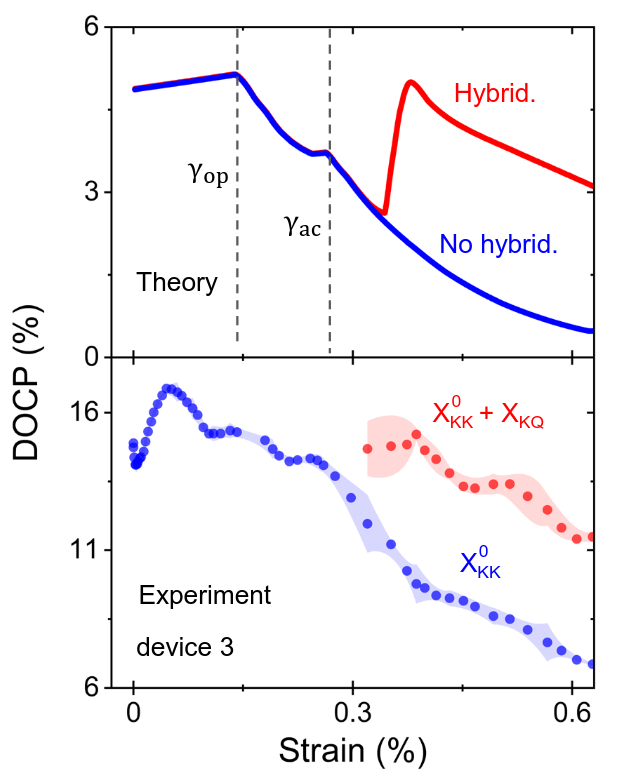Main Content
Preprints
Inhalt ausklappen Inhalt einklappen 209. A. M. Kumar, D. J. Bock, D. Yagodkin, E. Wietek, B. Höfer, M. Sinner, P. Hernández López, S. Heeg, C. Gahl, F. Libisch, A. Chernikov, E. Malic, R. Rosati, K. I. Bolotin "Strain engineering of valley-polarized hybrid excitons in a 2D semiconductor", arXiv: 2502.11232

Encoding and manipulating digital information in quantum degrees of freedom is one of the major challenges of today's science and technology. The valley indices of excitons in transition metal dichalcogenides (TMDs) are well-suited to address this challenge. Here, we demonstrate a new class of strain-tunable, valley-polarized hybrid excitons in monolayer TMDs, comprising a pair of energy-resonant intra- and intervalley excitons. These states combine the advantages of bright intravalley excitons, where the valley index directly couples to light polarization, and dark intervalley excitons, characterized by low depolarization rates. We demonstrate that the hybridized state of dark KK' intervalley and defect-localized excitons exhibits a degree of circular polarization of emitted photons that is three times higher than that of the constituent species. Moreover, a bright KK intravalley and a dark KQ exciton form a coherently coupled hybrid state under energetic resonance, with their valley depolarization dynamics slowed down a hundredfold. Overall, these valley-polarized hybrid excitons with strain-tunable valley character emerge as prime candidates for valleytronic applications in future quantum and information technology.
arXiv: 2502.11232Inhalt ausklappen Inhalt einklappen 208. B. Kundu, P. Chakrabarty, A. Dhara, R. Rosati, C. Samanta, S. K. Chakraborty, S. Sahoo, S. Dhara, Saroj P. Dash, E. Malic, S. Lodha, P. K. Sahoo "Trion-Engineered Multimodal Transistors in Two-dimensional Bilayer Semiconductor Lateral Heterostructures", arXiv: 2411.01257

Multimodal device operations are essential to advancing the integration of 2D semiconductors in electronics, photonics, information and quantum technology. Precise control over carrier dynamics, particularly exciton generation and transport, is crucial for finetuning the functionality of optoelectronic devices based on 2D semiconductor heterostructure. However, the traditional exciton engineering methods in 2D semiconductors are mainly restricted to the artificially assembled vertical pn heterostructures with electrical or strain induced confinements. In this study, we utilized bilayer 2D lateral npn multijunction heterostructures with intrinsically spatially separated energy landscapes to achieve preferential exciton generation and manipulation without external confinement. In lateral npn FET geometry, we uncover unique and nontrivial properties, including dynamic tuning of channel photoresponsivity from positive to negative. The multimodal operation of these 2D FETs is achieved by carefully adjusting electrical bias and the impinging photon energy, enabling precise control over the trions generation and transport. Cryogenic photoluminescence measurement revealed the presence of trions in bilayer MoSe2 and intrinsic trap states in WSe2. Measurements in different FET device geometries show the multifunctionality of 2D lateral heterostructure phototransistors for efficient tuning and electrical manipulation of excitonic characteristics. Our findings pave the way for developing practical exciton-based transistors, sensors, multimodal optoelectronic and quantum technologies.
arXiv: 2411.01257